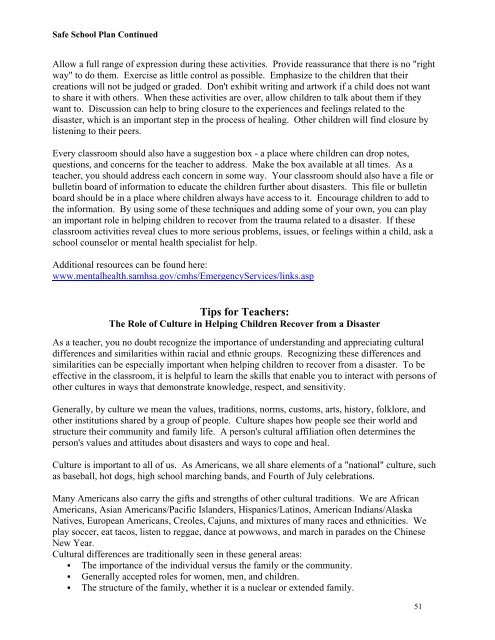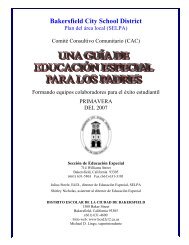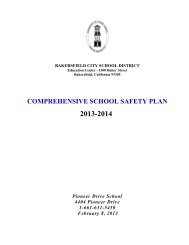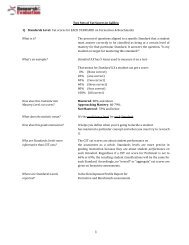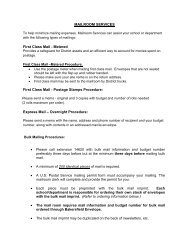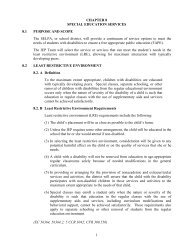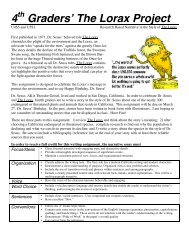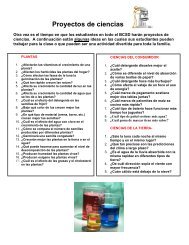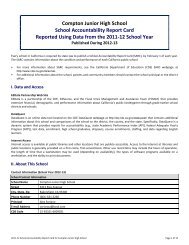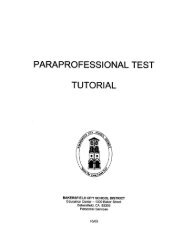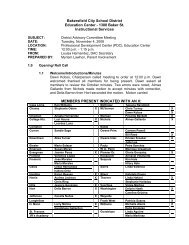Thorner - BCSD Static Server - Bakersfield City School District
Thorner - BCSD Static Server - Bakersfield City School District
Thorner - BCSD Static Server - Bakersfield City School District
You also want an ePaper? Increase the reach of your titles
YUMPU automatically turns print PDFs into web optimized ePapers that Google loves.
Safe <strong>School</strong> Plan ContinuedAllow a full range of expression during these activities. Provide reassurance that there is no "rightway" to do them. Exercise as little control as possible. Emphasize to the children that theircreations will not be judged or graded. Don't exhibit writing and artwork if a child does not wantto share it with others. When these activities are over, allow children to talk about them if theywant to. Discussion can help to bring closure to the experiences and feelings related to thedisaster, which is an important step in the process of healing. Other children will find closure bylistening to their peers.Every classroom should also have a suggestion box - a place where children can drop notes,questions, and concerns for the teacher to address. Make the box available at all times. As ateacher, you should address each concern in some way. Your classroom should also have a file orbulletin board of information to educate the children further about disasters. This file or bulletinboard should be in a place where children always have access to it. Encourage children to add tothe information. By using some of these techniques and adding some of your own, you can playan important role in helping children to recover from the trauma related to a disaster. If theseclassroom activities reveal clues to more serious problems, issues, or feelings within a child, ask aschool counselor or mental health specialist for help.Additional resources can be found here:www.mentalhealth.samhsa.gov/cmhs/EmergencyServices/links.aspTips for Teachers:The Role of Culture in Helping Children Recover from a DisasterAs a teacher, you no doubt recognize the importance of understanding and appreciating culturaldifferences and similarities within racial and ethnic groups. Recognizing these differences andsimilarities can be especially important when helping children to recover from a disaster. To beeffective in the classroom, it is helpful to learn the skills that enable you to interact with persons ofother cultures in ways that demonstrate knowledge, respect, and sensitivity.Generally, by culture we mean the values, traditions, norms, customs, arts, history, folklore, andother institutions shared by a group of people. Culture shapes how people see their world andstructure their community and family life. A person's cultural affiliation often determines theperson's values and attitudes about disasters and ways to cope and heal.Culture is important to all of us. As Americans, we all share elements of a "national" culture, suchas baseball, hot dogs, high school marching bands, and Fourth of July celebrations.Many Americans also carry the gifts and strengths of other cultural traditions. We are AfricanAmericans, Asian Americans/Pacific Islanders, Hispanics/Latinos, American Indians/AlaskaNatives, European Americans, Creoles, Cajuns, and mixtures of many races and ethnicities. Weplay soccer, eat tacos, listen to reggae, dance at powwows, and march in parades on the ChineseNew Year.Cultural differences are traditionally seen in these general areas:• The importance of the individual versus the family or the community.• Generally accepted roles for women, men, and children.• The structure of the family, whether it is a nuclear or extended family.51


